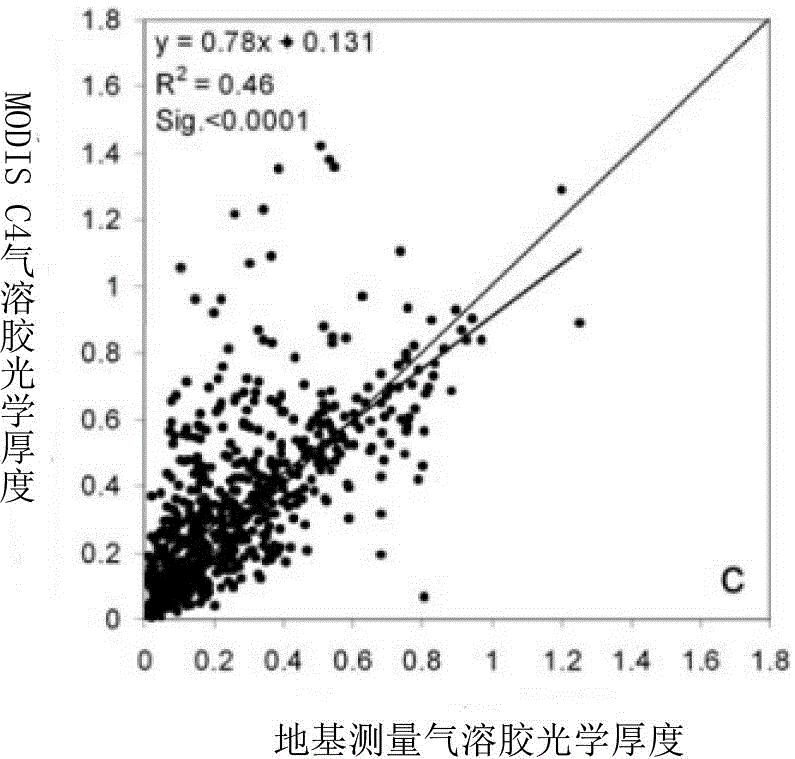Aerosol optical depth remote sensing retrieval method
An optical depth, remote sensing inversion technology, applied in the field of remote sensing, can solve the problems of unavailability, inability to accurately obtain the surface reflectance of dense vegetation, unsatisfactory inversion results, etc., and achieve easy-to-obtain results.
- Summary
- Abstract
- Description
- Claims
- Application Information
AI Technical Summary
Problems solved by technology
Method used
Image
Examples
Embodiment Construction
[0022] Compared with the existing aerosol retrieval sensors, the CCD camera of the Environment-1 satellite has a very high spatial resolution (30 meters), so that compared with dense vegetation pixels, more pure vegetation can be found on the image. Pixels, these pure pixels may contain vegetation, but also include large squares in the city (such as Tiananmen Square in Beijing), roofs, roads, and lakes, and these latter pure pixels also exist in winter. Another advantage of the CCD camera of the Environment-1 satellite is its high time resolution, especially when A star and B star are combined, this advantage is more obvious. Therefore, a series of observations can be obtained for the same target within a certain period of time, including observations of sunny weather and observations of polluted weather. There are a variety of aerosol optical depth inversion algorithms that assume that the surface reflectance changes little within a certain period of time (such as within thre...
PUM
 Login to View More
Login to View More Abstract
Description
Claims
Application Information
 Login to View More
Login to View More - R&D
- Intellectual Property
- Life Sciences
- Materials
- Tech Scout
- Unparalleled Data Quality
- Higher Quality Content
- 60% Fewer Hallucinations
Browse by: Latest US Patents, China's latest patents, Technical Efficacy Thesaurus, Application Domain, Technology Topic, Popular Technical Reports.
© 2025 PatSnap. All rights reserved.Legal|Privacy policy|Modern Slavery Act Transparency Statement|Sitemap|About US| Contact US: help@patsnap.com



